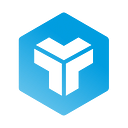User Interviews as UX analytics tool
This is one of the most used and useful tools for our daily work at Torresburriel Estudio.
This article is a translation of the following article published on our corporate website:
User interviews are one of the available tools when doing an ethnographic research on user behavior. Merriam-Webster definition states as follows:
1: a formal consultation usually to evaluate qualifications (as of a prospective student or employee)
2 a: a meeting at which information is obtained (as by a reporter, television commentator, or pollster) from a person
b: a report or reproduction of information so obtained
And here’s Wikipedia definition:
An interview is essentially a structured conversation where one participant asks questions, and the other provides answers.
Amongst Wikipedia types of interviews we can find the following:
Marketing and Academic. In marketing research and academic research, interviews are used in a wide variety of ways as a method to do extensive personality tests. Interviews are the most used form of data collection in qualitative research. Interviews are used in marketing research as a tool that a firm may utilize to gain an understanding of how consumers think. Consumer research firms sometimes use computer-assisted telephone interviewing to randomly dial phone numbers to conduct highly structured telephone interviews, with scripted questions and responses entered directly into the computer.
The most interesting part of the latest paragraph is the to gain an understanding of how consumers think. And this is important as this is our main goal when interviewing users: gathering information from users to get and/or reinforce information.
Knowledge is key in user research, and is the first and simplest work to do. Knowing the users, what they want, their needs, perspectives, subtle interactions and nuances… And the only way to know is asking. That is why the interview is one of the tools we need to use and master.
Once we have introduced you what an interview is and what it is for, let’s see how to plan and conduct an interview from two points of view:
- As part of an ethnographic analysis.
- Our main goal will be designing better experiences for digital project.
To properly plan any interview you only need answers to some questions, answers you don’t know previously. If you already know the answers, maybe you should consider another UX research method.
However, reasons for user interviews may seem obvious, but are not:
- Each role involved in a digital project has their own vision and their own goals, and each can be opposed. So, finding and understanding this will be the first thing we will need to address.
- Every digital experience has its own offline version. Well, most of them. It is impossible to know each and every process on each and every project. Interviews help to avoid any arrogance when working with any client.
- Even if you know a lot about the field of the digital project, there is a number of details that may be unknown. Remember, the Devil is in the details.
Having a list of questions that can be answered by any of the people involved in the project is a good starting point to plan your user interview. And some of these questions are:
- Who is the customer? What do they do for living?
- What is the project about? Which are the goals to achieve? Are there any KPIs to know how the project is going?
- Who are the team members? Which role do they play on the project? And their background? How is internal communication managed?
- What is the project about? Which pain points does it solve? Who is your main target? How is your competitors experience?
- How is the project developed? Is there any SWOT analysis? Has any uncontrolled risk been identified?
If you have properly prepared these questions, you can conduct a successful first session.
But planning an interview is far beyond from having a list of questions and using them as a checklist:
- Consider if you will be asking about each and every task performed by the user. And this has to take into consideration project goals.
- An extra interview may be necessary depending on collected answers and you have to be prepared for Interview v2. You can gather better quality answers on that session and will help you to confirm the data gathered on the first session.
After successful planning, you need to worry about execution, the interview itself. And your best friend here will be a script.
An interview must be a conversation. If the user is comfortable enough, answers collected will be better and you will be able to achieve interview goals: know all the details, obvious and hidden, of the processes involved in user tasks.
Summarizing, using a list of user tasks, the user might provide in this conversation with all the clues to find a potential design (both for interface and processes) to fully achieve project goals.
If you need a schematic view of this, it will be as follows:
- Project goals — 3. User tasks — 1. Interface | 2. Processes
An interview will help you to gather information to design both the interface and processes that impact on user tasks. You will interact with users in conversation that can take part in one or more sessions.
Using an interview is not only a good idea, but probably the best way to gather information that can’t be obtained using any other tool.
At Torresburriel Estudio, we work designing digital products, enhancing customer experience through research and user testing. If you are looking for help from UX professionals, contact us.
